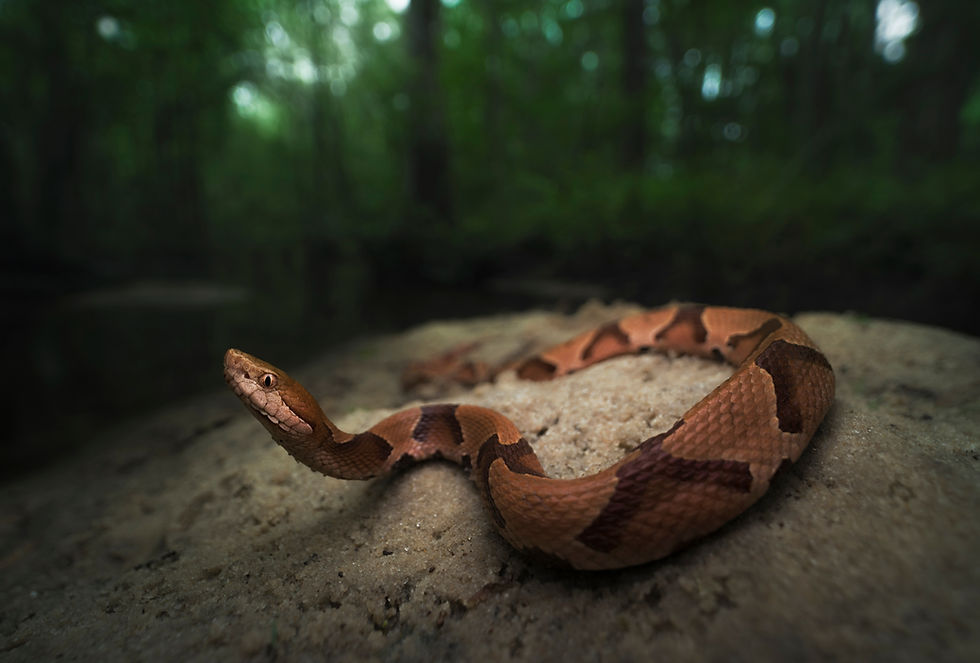Indiana's Reptiles Go Nocturnal in the Heat of Summer
- Jim Horton

- Jul 14
- 2 min read
By Jim Horton
As summer temperatures soar across Indiana, a quiet shift takes place in the rhythms of the state’s cold-blooded residents. From the sun-drenched dunes of the north to the forested hills of the south, many of Indiana’s reptiles are flipping their schedules—trading sunbathing for moonlit movement. This seasonal behavior, known as nocturnality, is a survival strategy that helps reptiles beat the heat and stay active during the dog days of summer.
Why the Switch to Nighttime?
Reptiles are ectothermic, meaning they rely on external sources to regulate their body temperature. While basking in the sun is essential for warming up in spring and fall, the intense heat of midsummer can push daytime temperatures beyond what’s safe—even for heat-loving species like snakes and lizards.
To avoid overheating, many reptiles shift their activity to cooler parts of the day:
• Crepuscular hours (dawn and dusk) become prime time for hunting and movement.
• Nighttime offers cooler temperatures and reduced risk of dehydration.
• Midday becomes a time for hiding in burrows, under logs, or beneath leaf litter.
Who’s Out After Dark?
Several of Indiana’s native reptiles are known to adopt nocturnal habits during the summer months:
Common garter snakes will hunt at night during the summer months.
Eastern copperheads are more nocturnal during this time as well.
Timber rattlesnakes become crepuscular or even nocturnal during the heat of summer.
Eastern milk snakes are nocturnal hunters in summer.
I’ve found ringneck snakes and even worm snakes at night as well. Eastern box turtles beat the heat by moving more in the evening and mornings.
Other snakes you might find at night are rat snakes, king snakes, and water snakes. I often find water snakes patrolling the shoreline of lakes, ponds, and creeks in search of fish and amphibians. Walk riparian edges with a flashlight. They are probably the most common species that you’ll easily find at night.

Note: While most of Indiana’s snakes are harmless, summer nights are when venomous species like the copperhead may be more active. Always watch your step when hiking or camping.
How to Spot Nocturnal Reptiles
If you’re hoping to observe these elusive creatures, here are a few tips:
• Bring a flashlight with a red filter to avoid startling animals.
• Look near water sources, where reptiles may hunt or cool off.
• Listen for rustling in leaf litter or the splash of a startled snake.
• Drive secluded, wooded roadways at dusk and into the night.
Climate and Conservation
Indiana’s increasingly hot summers driven by climate change may be pushing reptiles to adopt
nocturnal habits more frequently or for longer periods. This shift can affect their feeding, mating, and interactions with other species. Researchers tracking the seasonal movements of these animals may give us a better understanding of these summer activities/movements.
As the sun sets and the air cools, Indiana’s reptilian residents emerge from their hiding spots, gliding silently through the underbrush or basking in the moonlight on warm rocks. Their nocturnal movements are a testament to nature’s resilience—and a reminder that even the quietest corners of the night are teeming with life.




Comments